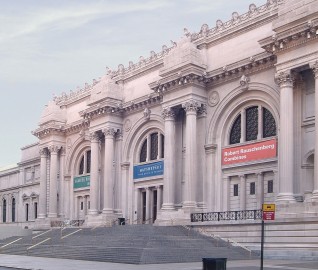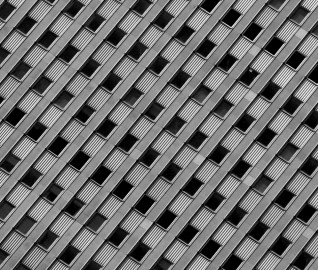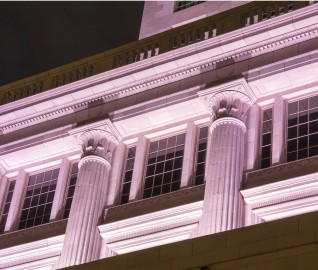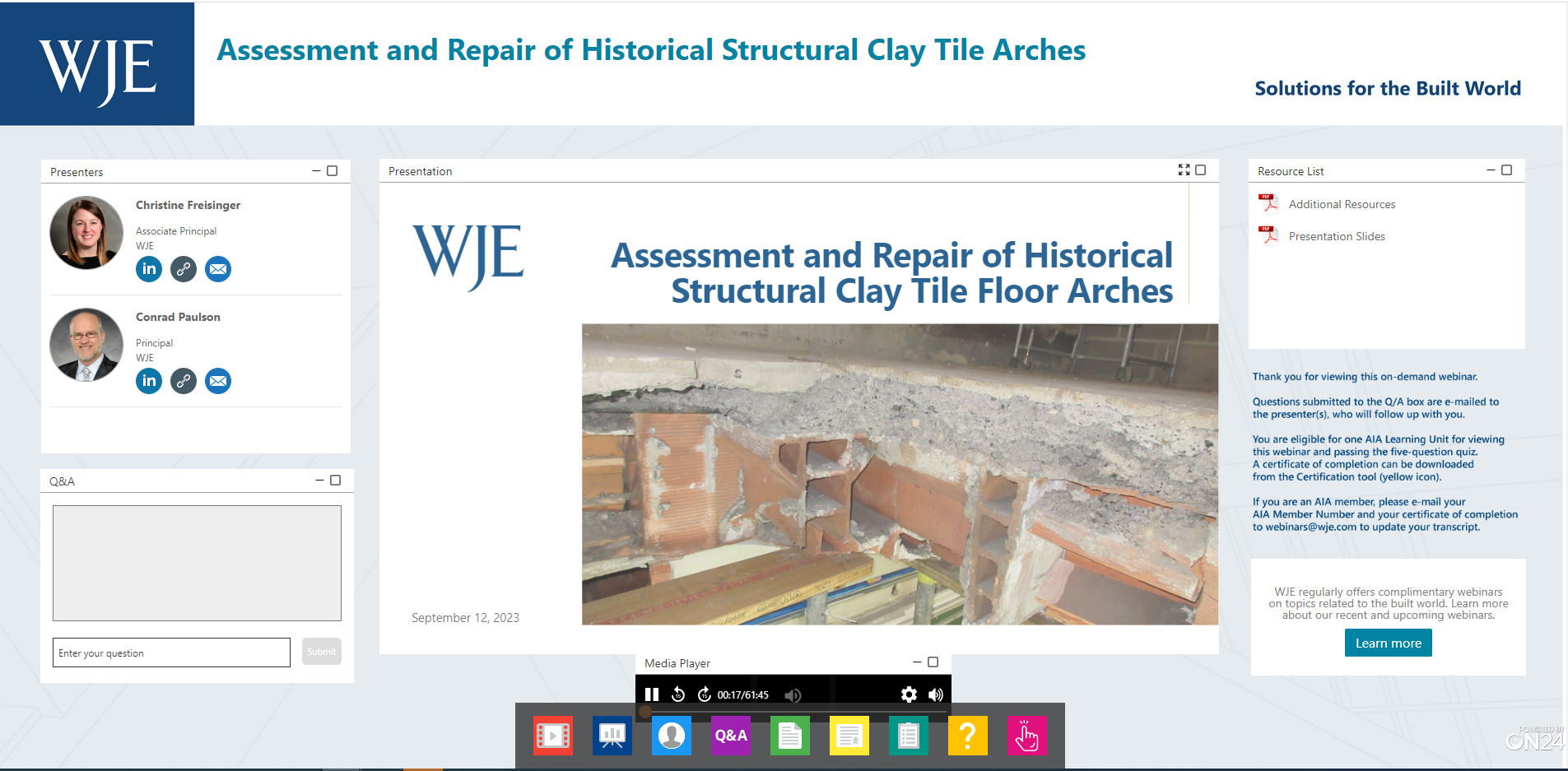Structural clay tile floor arches were commonly used in late 1800s and early 1900s building construction to create a fire-resistive floor system. Although flat in appearance, the system behaves like an arch, spanning between steel floor beams to support its own weight as well as the superimposed dead and live loads on the floor. When properly maintained, historical clay tile floor arches can continue to provide adequate strength; however, clay tile is an extremely brittle material that tends to fracture when exposed to vibratory conditions, such as hammer drilling. Damage to clay tile is cumulative, and successive buildouts or renovations will cause additive damage to a clay tile floor arch system.
In this webinar, WJE structural engineers Christine Freisinger and Conrad Paulson summarize the history of clay tile floor arches, explain their structural behavior, and provide guidance for repairing typical damage as well as for removing portions of a floor arch system during renovation projects.
By the end of the webinar, you will be able to:
• Describe the structural behavior of clay tile floor arches
• Explain the advantages and disadvantages of historical clay tile floor arches
• Identify cumulative damage to clay tile floor arches due to successive buildouts
• Summarize the methodology for repairing a damaged clay tile floor arch
more to learn
View this webinar in our interactive audience console to earn 1 AIA HSW learning unit, access related resources, submit questions to the presenters, and download a certificate of completion.
RELATED INFORMATION
-
 We offer in-house expertise for a full range of investigation, analysis, and design services... MORE >Services | Architectural Finishes and Materials
We offer in-house expertise for a full range of investigation, analysis, and design services... MORE >Services | Architectural Finishes and Materials -
 Our professionals deliver practical repair and rehabilitation services that maximize the... MORE >Services | Repair and Rehabilitation
Our professionals deliver practical repair and rehabilitation services that maximize the... MORE >Services | Repair and Rehabilitation -
 We understand the myriad challenges faced by building owners and managers, and we're committed... MORE >Markets | Buildings
We understand the myriad challenges faced by building owners and managers, and we're committed... MORE >Markets | Buildings -
 Our professionals balance the need to provide practical, long-term solutions with the ability to... MORE >Services | Historic Preservation
Our professionals balance the need to provide practical, long-term solutions with the ability to... MORE >Services | Historic Preservation




































